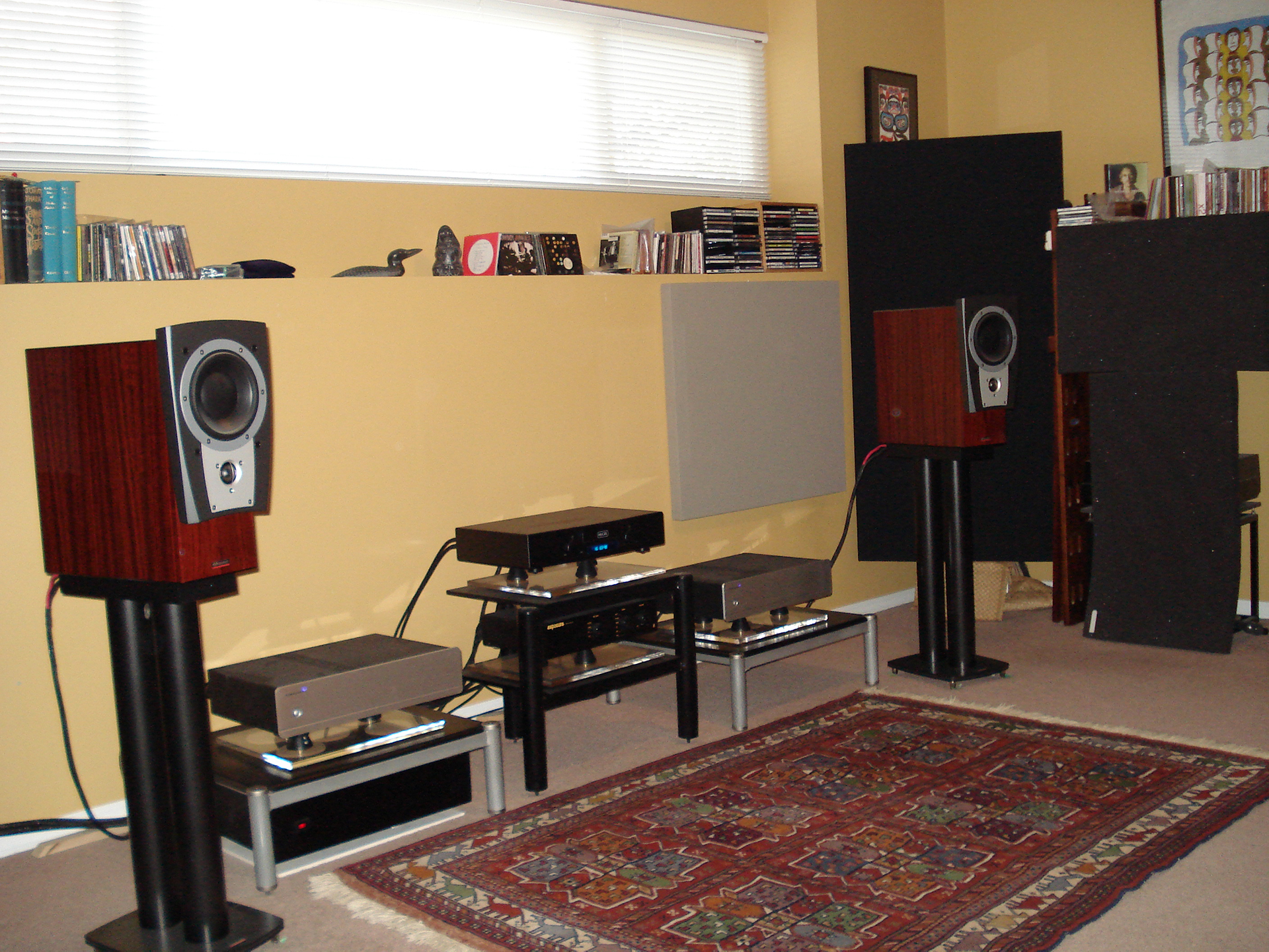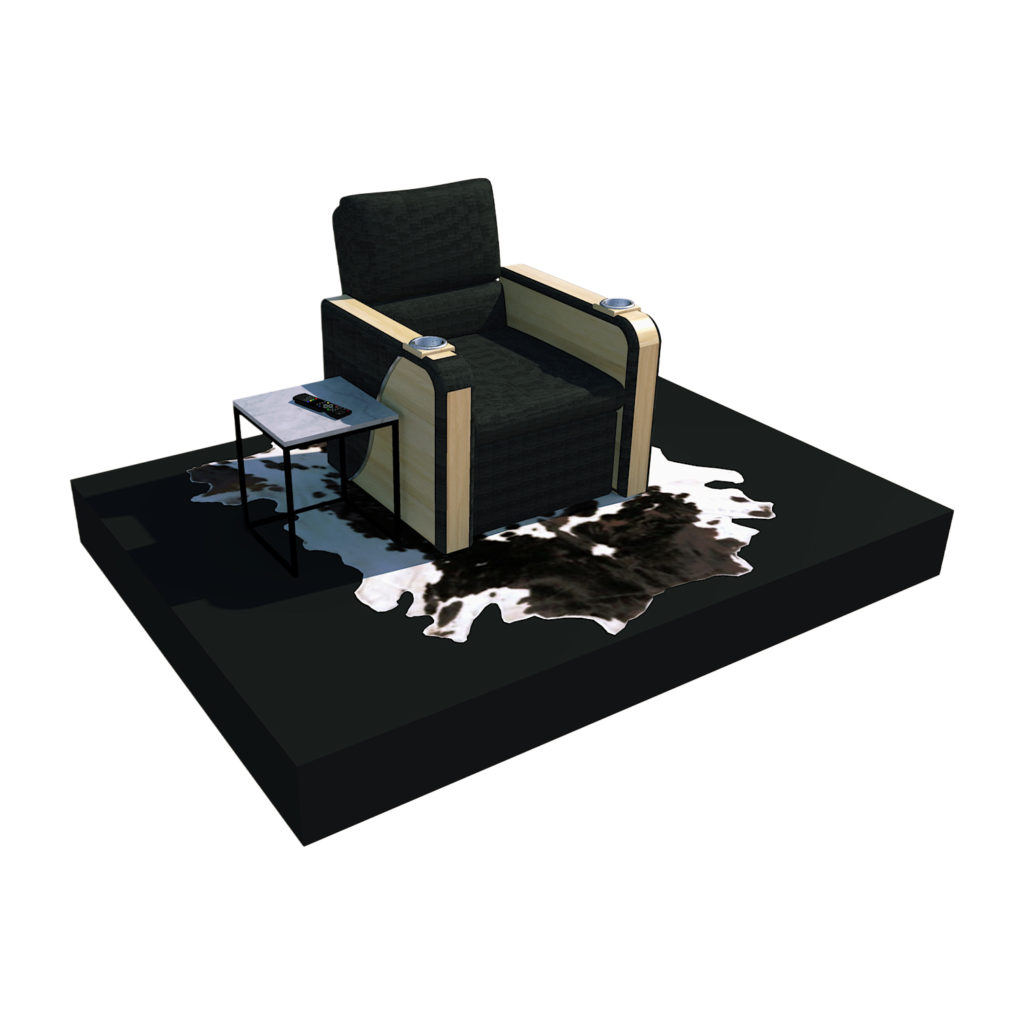
At Acoustic Fields, we offer a room analysis feature https://www.acousticfields.com/free-room-analysis/ which allows clients to fill out vital information regarding their rooms and they can attach pictures of the room to our room form. Once they have submitted the form, they are prompted by the software to schedule a time slot to speak with Dennis regarding the issues within their rooms and how to fix those issues. It is important to have our website https://www.acousticfields.com/ up and running so Dennis can refer you to the proper products to deal with your specific room issues without wasting valuable time. The pictures that you attach to the room analysis form are valuable for many reasons. They show Dennis what space is available for treatment technologies and they also show your room set up. Most individuals do not have their audio systems set up correctly within their rooms. Most try to do too much within their rooms. They could be and most often are the largest problem when it comes to achieving quality sound within their rooms. At AF, we take room acoustics and achieving sound quality within our critical listening rooms very seriously. Read About Us: https://www.acousticfields.com/about/
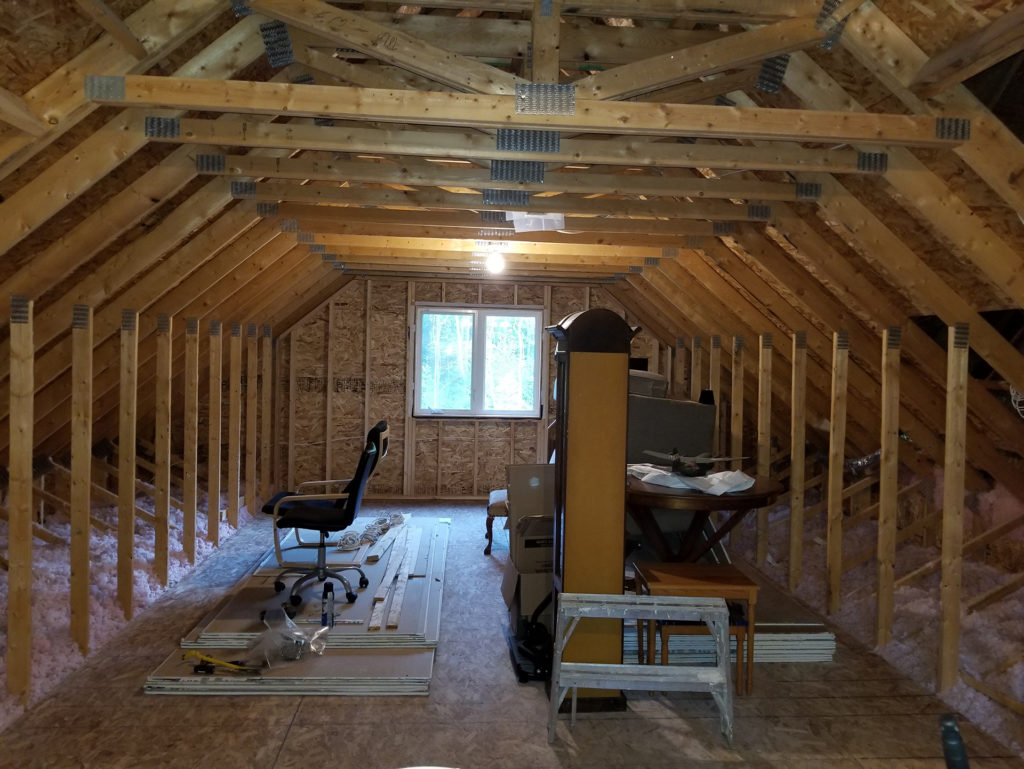
In this photo, we see a room framed out with raw studs. This is a welcome structure when it comes to treatment types within small rooms. The wood framing allows for us to place low-frequency management within the walls themselves. This has two major advantages. First it allows for enough surface area coverage to manage the low end within a room. Low -frequency issues are always the first thing we must address within any small room. We can build the low-frequency management into the walls themselves so we do not have any free standing units taking up space. With low-frequency technology it is all about having enough square footage of coverage to deal with the frequency and amplitude issues at the specific wall locations. We have a system that is termed the C.A.W or carbon absorbing wall. https://www.acousticfields.com/carbon-absorber-wall/ It is our proprietary technology that uses the wall as the “cabinet” for diaphragmatic absorption. Inside the wall, we use our carbon technology to increase the rate of absorption within the wall itself. In a diaphragmatic absorber, the wall or cabinet depth determines how low you can absorb energy at and the carbon fill material determines how much energy will be absorbed at each octave band above the wall or cabinet’s resonant frequency. With our carbon technology built into the walls, we can manage low-frequency issues every 14 1/2″ within our rooms. This allows us to build rooms that have a balanced frequency response curve with minimal peaks and troughs.
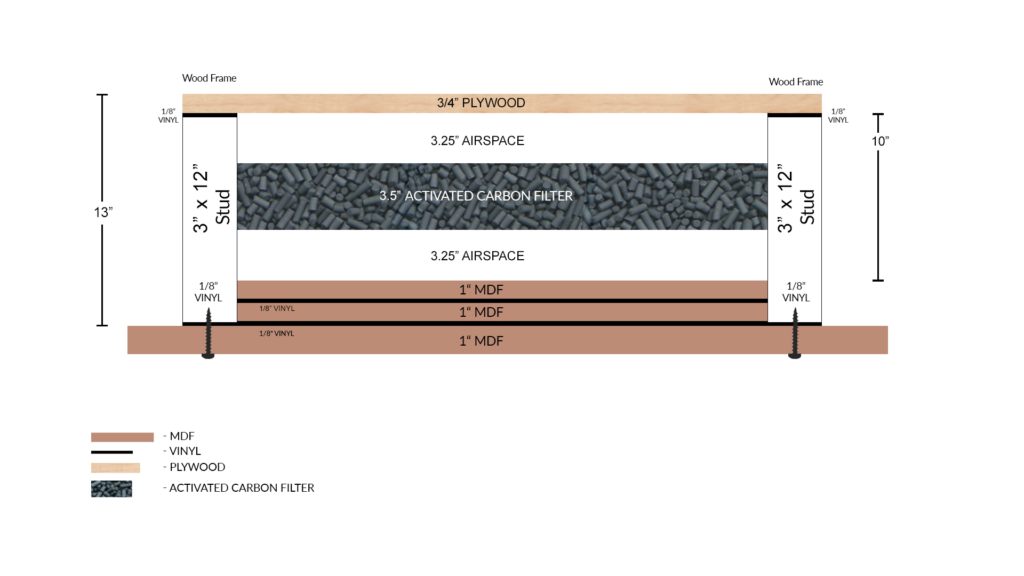
With our CAW system, we will need to frame the room out with 2″ x 12″ studs. This will give us the required “cabinet” depth to achieve the frequency we need at that wall location. In order to absorb down to 30 Hz, we need a cabinet depth of 10″. With a 2″ x 12″ stud depth we have that 10″ and more to achieve our absorption goals. If we are using a more broadband approach, we can use an 8″ stud space. The depth we will use depends on the usage of the room and the size or volume of the room. Every room is different which is largely dependent on the issues it will create. We must address each wall issue independently of the other walls. Every wall contributes its own percentage to the overall issues and each wall must be treated for its own individual frequency and amplitude issues. Not all walls are created equal and you must identify the issues each wall surface area presents. Achieving quality sound within small rooms is all about doing a lot of little things correctly, but just as important doing them in the proper order. Each step builds upon the step before it. If you skip a step, you will end up with a room that does not address your sonic requirements.
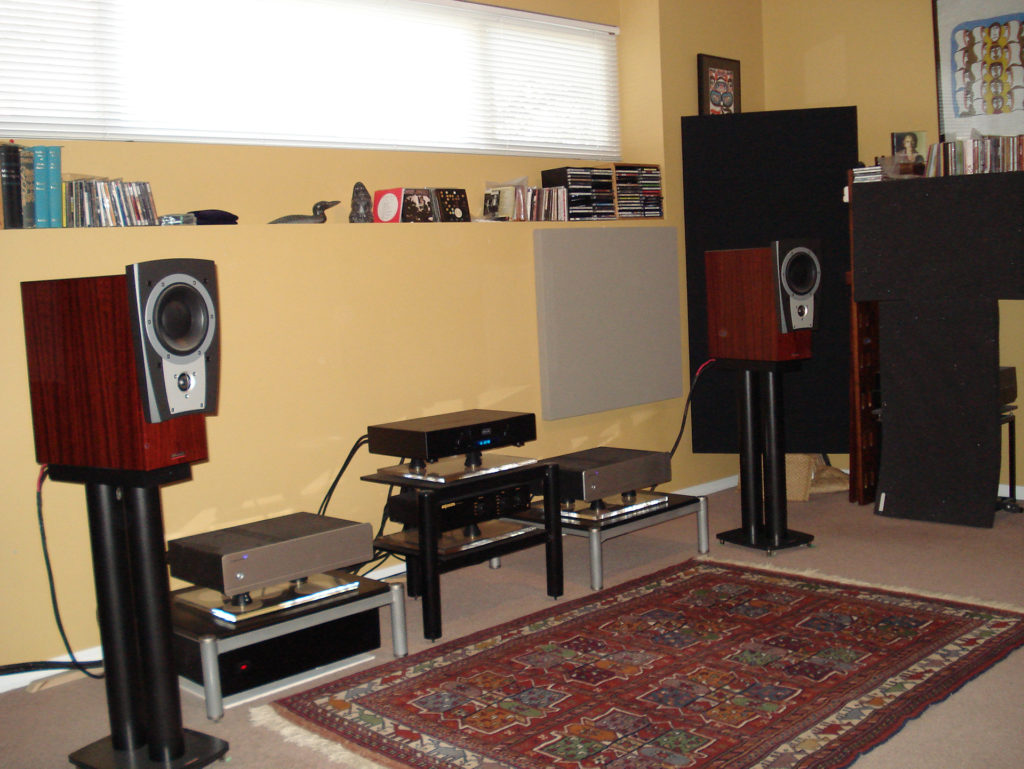
In this photo we have a mixture of both good and bad set up. The good part is that the equipment is set up correctly. Notice the height of the gear is low enough that it does not interfere with the soundstage created by the middle range drivers. Always keep your equipment low to the ground so you do not create spurious reflections that interfere with the soundstage you are trying to recreate. Draw an imaginary line from the bottom of your middle frequency drivers and extend that line from speaker to speaker. Keep your equipment height below that line. Place your equipment on a platform that will absorb energy and reduce vibrations. The floor to equipment contact points can allow for structural vibrations to transfer into your amplifiers. Amplifiers do one thing very well; they amplify. They take voltage and convert it into watts. They also amplify vibrations which can occur from airborne energy and structural vibrations. The treatment that we see on the front wall is not the proper type for the issues that the front wall generates. The front wall is the closest wall to the gear and the energy produced by the speakers and front wall is a broad band frequency range that usually starts in the 40 – 50 Hz. range. A panel that is only a few inches deep will not address those issues. You must use a technology that is designed to go down into the lower frequency ranges to absorb the excess energy created by that wall/gear location. Diaphragmatic absorption is the only absorption technology that has the required rates and levels of absorption to deal with front wall energy issues. https://www.acousticfields.com/product/carbon-panel/ Thinner panels will be effective in managing reverberation times produced by reflections. http://hyperphysics.phy-astr.gsu.edu/hbase/Acoustic/reverb.html
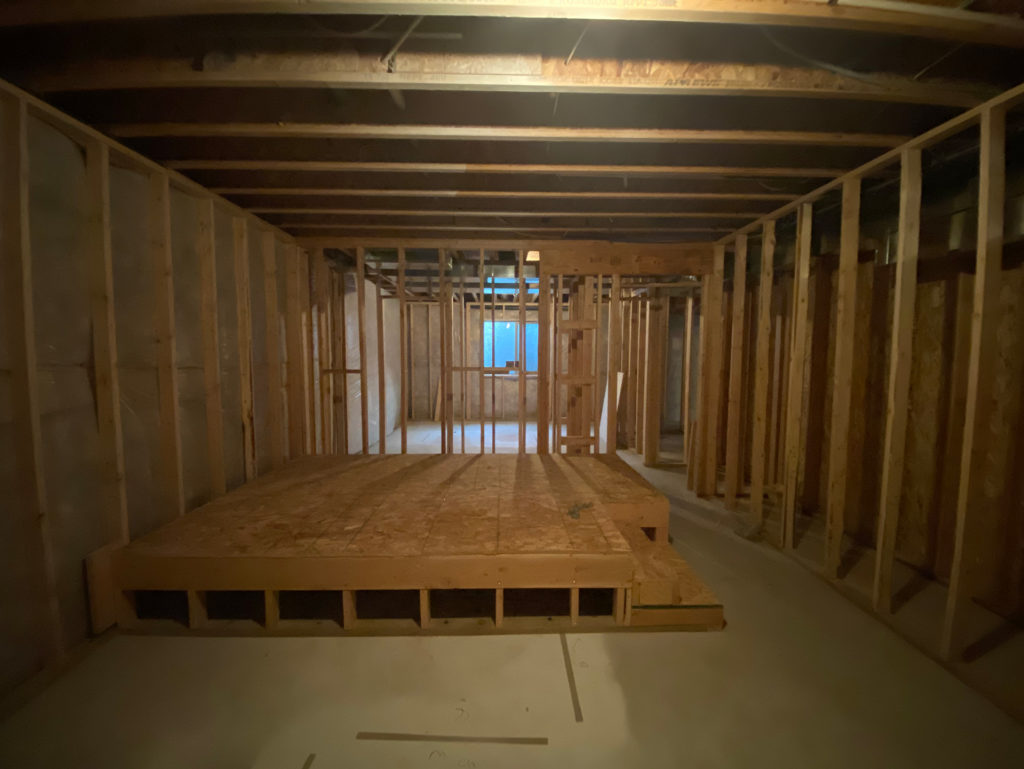
In most theaters we build, we have a seating platform that is elevated to allow for multiple rows of chairs to be used. The elevated platform allows for a second row of seats to be elevated above the first row to allow for the second row to view the screen correctly. The platform can also serve another master. In theaters, we are dealing with lots of low-frequency energy. We usually have multiple subwoofers which fill and pressurize the room. Most of the time in rooms we see there is too much low-frequency energy and the room loads with . This process can smother dialog. When this occurs it is difficult to hear music and voice. Low-frequency energy produces room modes that can smother or exaggerate certain octave bands. If your music and voice falls within those octave bands, you will not hear some of the music and voice or hear too much of it. https://en.wikipedia.org/wiki/Room_modes.The best place to put low frequency management technology is as close to the listener as you can. Placing low-frequency absorption under the seating area will provide the best results for managing the excess pressure issues around the listening position. This treatment space is no substitute for treating the walls which produce 70% of all the issues within our small rooms. However, for the small amount of space requirement you can create a large acoustical impact if you treat the seating platform with diaphragmatic absorption.


